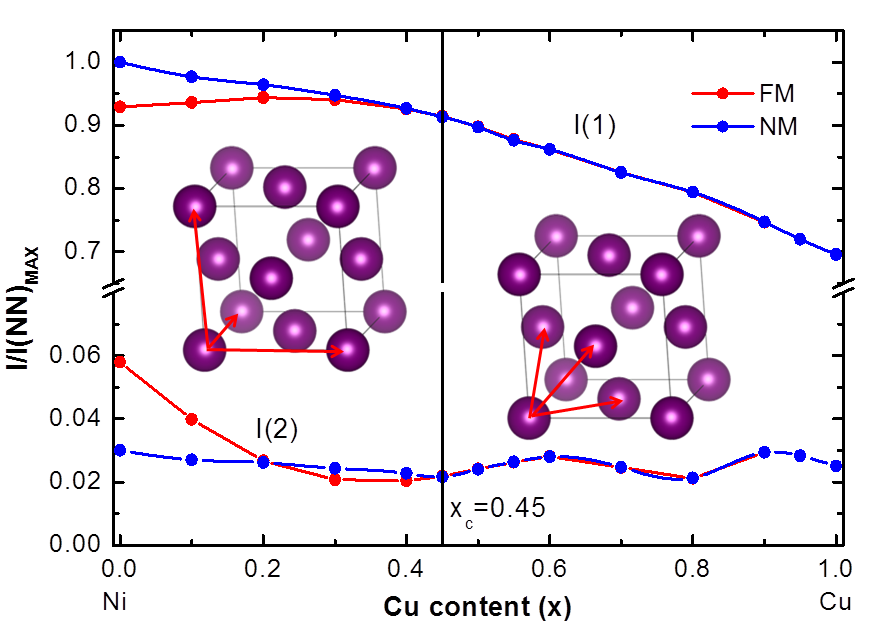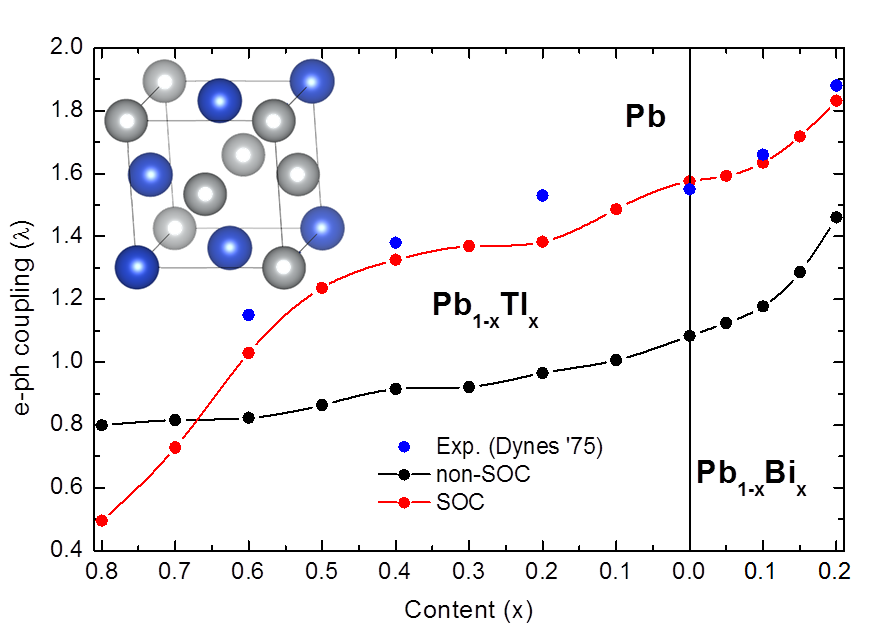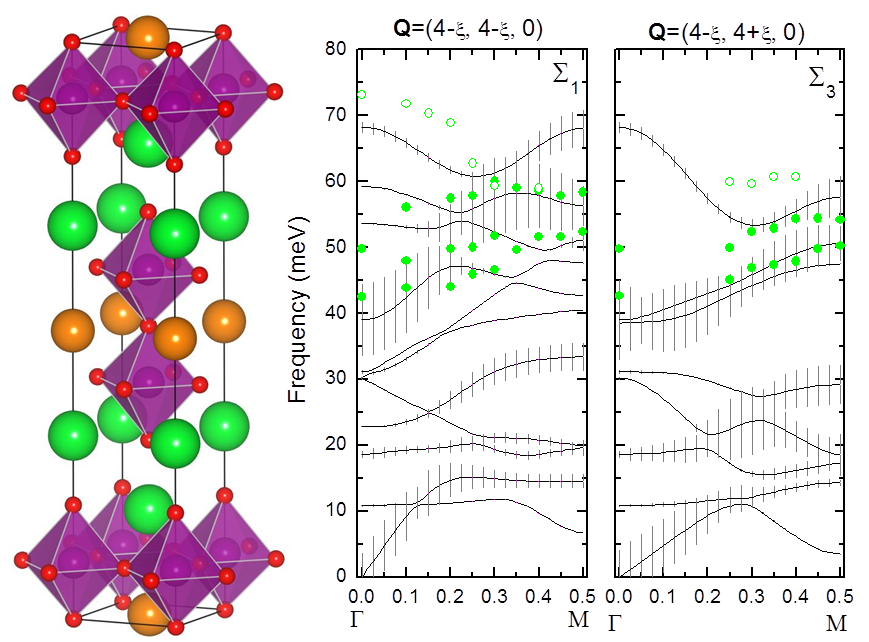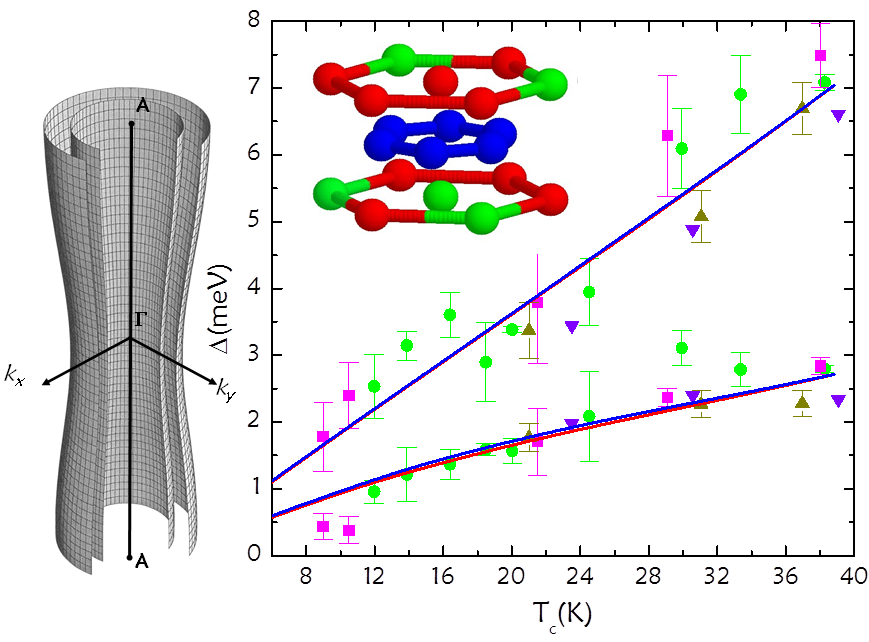
Research topics
Phonon properties on magnetic materials
The magnetic materials have been subject of intense research efforts from the
experimental and theoretical point of view in order to understand its nature and
also the effects of magnetism on several properties, like structural, electronic,
transport and so on.
However, the interplay and effect of magnetism on the vibrational properties (aka
phonons) it is not so well spread and profound as for other properties like, for
example, the electronic structure where the magnetism generates an imbalance in
the density of states, giving place to the mayority and minority channels.
In order to study such magnetic effects on phonons we proposed to start with the
most simple systems where the magnetic moment could vary in a simple way. One of
this systems (and the one was chosen to start with) corresponds to the metallic
Ni-Cu alloy, since there are a huge amount of experimental data related to it and
its evolution from Ni until Cu is very stable and without any kind of structural
phase transition or instabilities. This project was the MSc thesis of
Ivan Bustamante-Romero
(IFUAP).

Systems with strong e-ph coupling
We refer to a strong e-ph coupling system when
it presents values higher that 1.0 for that quantity. In that respect,
Pb (lead) is the prototype of a strong-coupling
superconductor with a e-ph coupling constant of 1.55 (the second highest value
for a superconductor element).
For elementary superconductors (with e-ph coupling as mediated mechanism), the
normal-state properties are, in general, obtained quite accurately within
density functional theory (DFT) and density functional perturbation theory (DFPT).
Appliying Eliashberg theory, these normal-state properties are sufficient for a
quantitative evaluation of various aspects of the superconducting state.
However, a notable exception is Pb, which has been the target of several DFPT
works dedicated specifically to the study of vibrational and e-ph coupling
properties, failing in the attempt to reproduce the experimental results.
The reason of such disagreement was the lack of
spin-orbit (SO) coupling in the standar calculations.
Thus, the importance of SO coupling for the lattice dynamics, e-ph coupling, and
superconducting properties of Tl-Pb-Bi alloys was investigated in order to
understand the evolution of such quantities and also the influence of SO coupling
as the electron-counting is changed. We found a profound influence of the SO
correction on the coupling strengh, enhancing in most cases the coupling constant
by as much as 50%, but reducing it for Tl-rich alloys. For the whole alloys series,
SO interaction impressively improved the agreement with both experimental phonon
spectra as well as with superconducting quantities obtained from tunneling
spectroscopy measurements, open the way to the study of other systems with
(apparently!) the same problematic.

Vibrational and coupling properties on manganites
Feroomagnetic manganites are very special and interesting systems since they present the so called collosal magnetoresistance effect (CMR). Here the interplay between charge, spin, and lattice degrees of freedom results in a multitude of unconventional properties of fundamental as well as practical interest. We have studied the lattice dynamical properties of the tetragonal double-layer manganite system La2-2xSr1+2xMn2O7 (x=0.4) for both ferromagnetic (FM) and non-magnetic (NM) ground states, reveling strong influence of the magnetic order on high-frequency modes which involve oxygen vibrations with Mn-O bond stretching modulations. They were traced back to changes in the dynamical coupling of medium-ranged bonds like Mn-Mn or O-O, while nearest neighbor Mn-O bonds remain practically unchanged. Electronically they originate from a replacement of the predominant Mn d(t2g) orbital polarization in the NM phase by a d(eg)-type polarization in the FM phase.

Superconductivity
Conventional superconductivity is related to the
electron-phonon (e-ph) coupling, as mediated
mechanism of coupling between electrons and lattice distortions (aka phonons),
giving place to the Cooper-pair. Such interaction
mechanism (e-ph coupling) is responsible for the presence of superconductivity in
several (relative!) simple materials, like Hg, Nb, Mo, Pb, Nb3Ge, and
more recently, MgB2.
We have been dedicated to the study of different superconducting alloys
(mediated by e-ph coupling), like Nb-Mo, Mg1-xAlxB2,
MgB2-xCx, and Tl-Pb-Bi systems.
The properties analyzed are the crystal structure, electronic structure, phonons,
coupling and superconductivity. All of them are studied by first-principles DFT
methods (standard and perturbative), while superconducting properties are obtained
from the information provided by DFT (electronic, vibrational and coupling) together
with the Eliashberg theory.
